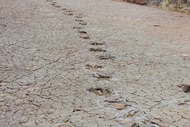Create a free profile to get unlimited access to exclusive videos, sweepstakes, and more!
Happy September equinox!
Today the Sun is directly over Earth's equator.

Today is the September equinox!
Tonight — depending on where you are on the planet; it might be morning or some part of the day — at 01:23 UTC (9:03 p.m. Eastern U.S. time) the center of the Sun will be directly over the Celestial Equator, passing from the northern hemisphere of the sky to the southern. We call that moment the equinox.
It has a lot of colloquial meanings, too. Some people call it the autumnal or fall equinox, though that’s unfair to people living in the southern hemisphere, when it occurs in spring. That’s why I call it the September equinox! A lot of folks like to think of it as the first day of autumn (or spring for those Down Below) but that never sat well with me either; the cross-quarter days six weeks after the solstices and equinoxes make better sense to me as seasonal starting dates. September is still usually pretty hot and things don’t start cooling down until October, so to me that’s when autumn really starts.
A big misconception about the equinoxes* is that it’s the day when daytime and nighttime are of equal length. The word does literally mean “equal night,” but it’s a misnomer: day and night are not equal in length on the equinox.
There are three reasons for this. If the Sun were a dot, then yes, on the equinoxes the day and night would be equal length — with one caveat that I’ll get to in a sec. But it’s not a dot; it’s a disk. We say the day starts when the upper edge of the Sun’s disk breaches the horizon when it rises, and the night starts when the upper edge of the Sun dips below the horizon when it sets. It takes the Sun about 2 minutes to move its own width across the sky, so this means the day is actually about two minutes longer than the night on the equinox.
Another is that the Earth has air. Light from the Sun bends when it enters our air, a process called refraction, the same effect that makes a spoon look broken when it sits in a glass of water. This means when you see the Sun on the horizon it’s actually below the horizon; the air bends the light enough to make the Sun appear higher than it actually is. So it rises earlier than you’d expect and sets later, adding more time to the length of day.
Both these effects make day longer than night. So in September, when the days are getting shorter for northern hemisphereans, you have to wait a few extra days to get day and night of the same length. This event is called the equilux — “equal light” — and happens on different times/days for different latitudes. At 40° north latitude, where the majority of people live, it’s around Sept. 26.
Oh, and the third effect? The exact moment of the equinox could happen at any time of day; it depends on a lot of things including the shape of Earth’s orbit. This throws off the timing such that even if the Earth had no air and the Sun were a dot you still might not get a single day/night period (called a nychthemeron, another extremely cool word) that has an equal time for both day and night.
This is a mess, because, typically, Nature is messy. We like to draw lines between things — day and night, spring and summer — but it’s never that clear when you dig down even a little.
That’s why I stick with the astronomical definition. The Earth spins, so it has a north and south pole. Halfway between them is the equator, and we can further divide things up into latitudes and longitudes. We can then project that spherical grid onto the sky, to mark the celestial north pole, the celestial south pole, and the celestial equator. The Earth is tilted by about 23°, so as it orbits the Sun the Sun appears to move north and south over the year in a lovely sine wave. When it crosses the celestial equator going north it’s the March equinox, when it reaches its maximum northern latitude — what astronomers call declination for historical reasons — it’s the June solstice, when it crosses the celestial equator again going south it’s the September equinox, and when it reaches its most southerly declination it’s the December solstice.
Since the celestial equator is a projection of the Earth’s actual equator on the sky, another way to think of this is that the Sun is directly over the equator on the equinoxes. If you stood on the equator the Sun would be at your zenith at midday.
My favorite effect from all this is that the Sun’s motion in declination is the fastest at the equinoxes, which means the length of day changes the most around then. You may notice the Sun setting earlier every day pretty quickly right now. I’m aware of this every year; I have to go out and feed the horses at a certain time of day — a couple of hours before sunset — so that they have enough time to eat before we put them to bed for the night. So I’m keenly aware of when the Sun sets, and every calendar day around this time of year it sets a couple of minutes earlier. You can notice that in just a week’s time!
I know sometimes people feel removed from astronomy, thinking that all this stuff happens far away and doesn’t affect them. But it does, all the time. You may not have to feed horses, but you might have to get up to go to work or to school, and the time of year you do it means the difference between it being light or dark out, and that’s all because the Earth is tipped over a little with respect to its orbit around the Sun!
You live on a planet orbiting a star with other planets in a galaxy full of stars and planets and dust and gas and magnetic fields and this all affects you, every single second of every day.
Isn’t it more fun to understand that and appreciate it?
Happy equinox!
* Besides how to pluralize them; sticking with the Latin root origin the plural would be equinoctes, which is objectively a cooler word.



























